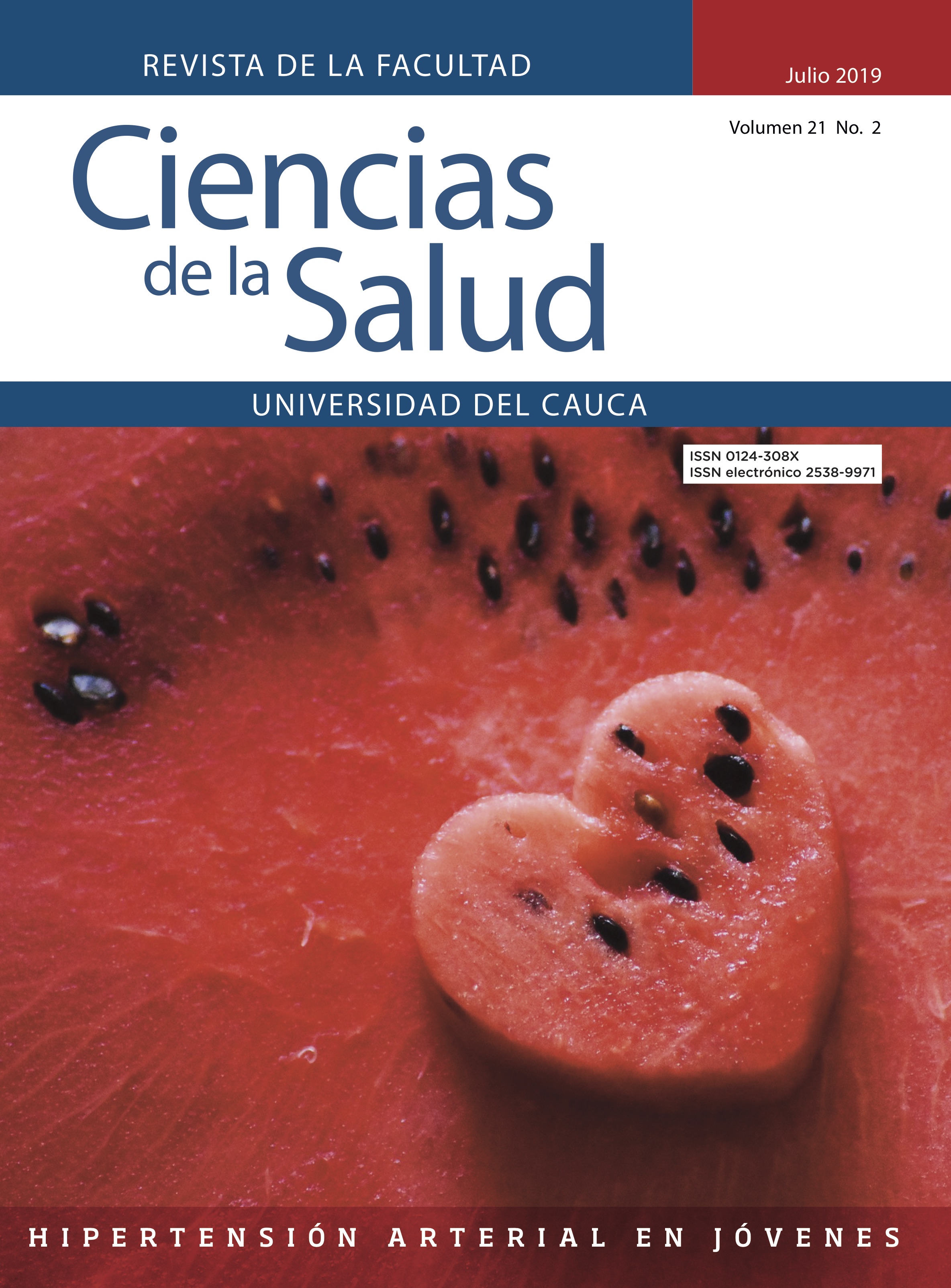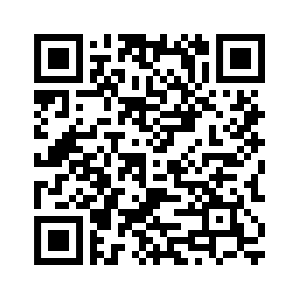Biomarcadores de estrés laboral en residentes: artículo de revisión
Resumen
A través del tiempo, se han generado múltiples definiciones para estrés, pero aún no se logra un consenso satisfactorio; en general, es percibido como una amenaza que pone en riesgo la armonía interna. Esta condición genera como respuesta una serie de cambios fisiológicos (respuesta adaptativa) que buscan mantener el equilibrio; con la activación subyacente de ejes como el hipotálamo-hipófisis-suprarrenal, cuyas sustancias liberadas tienen impacto en varios sistemas, lo que explicaría el desarrollo de ciertas enfermedades y justifica el uso de biomarcadores para la medición objetiva del estrés. Los médicos residentes en formación se han identificado como una población en riesgo para presentar estrés, específicamente estrés laboral o burnout (en inglés), el cual es posible medir de manera subjetiva mediante la aplicación de cuestionarios como el Maslach Burnout Inventory Human Services Survey (MBI), y a través del cual se ha identificado alta prevalencia de la condición; sin embargo, aún no existe consenso respecto a las estrategias de medición objetiva. La presente revisión pretende explorar la literatura existente sobre los biomarcadores como herramientas de medición de estrés laboral en residentes.
Descargas
Disciplinas:
Salud pública, Psiquiatría, PsicologíaReferencias bibliográficas
Chrousos GP. Stressors, stress, and neuroendocrine integration of the adaptive response: The 1997 Hans Selye Memorial Lecture. Annals of the New York Academy of Sciences. 1998;851(1):311-35 https://doi.org/10.1111/j.1749-6632.1998.tb09006.x
Goodnite PM, editor Stress: a concept analysis. Nursing forum; 2014: Wiley Online Library. Ali M, Asim H, Edhi AI, Hashmi MD, Khan MS, Naz F, et al. Does academic assessment system type affect levels of academic stress in medical students? A cross-sectional study from Pakistan. Medical education online. 2015; 20(1):27706 https://doi.org/10.3402/meo.v20.27706
Herrera Julian A. Psiconeuroinmunología para la práctica clínica. Primera edición. Santiago de Cali: Programa Editorial Universidad del Valle, 2009. 208 p.
Kopp MS, Thege BK, Balog P, Stauder A, Salavecz G, Rózsa S, et al. Measures of stress in epidemiological research. Journal of Psychosomatic Research. 2010;69(2):211-25 https://doi.org/10.1016/j.jpsychores.2009.09.006
Antúnez Z, Vinet EV. Escalas de depresión, ansiedad y Estrés (DASS-21): Validación de la Versión abreviada en Estudiantes Universitarios Chilenos. Terapia psicológica. 2012;30(3):49-55 https://doi.org/10.4067/S0718-48082012000300005
Pedrero-Pérez EJ, de León JMR-S, Lozoya-Delgado P, Rojo-Mota G, Llanero-Luque M, Puerta-García C. La "Escala de estrés percibido": estudio psicométrico sin restricciones en población no clínica y adictos a sustancias en tratamiento. Psicología conductual. 2015;23(2):305-24
Maslach C, Schaufeli WB, Leiter MP. Job burnout. Annual review of psychology. 2001;52(1):397-422 https://doi.org/10.1146/annurev.psych.52.1.397
Hänsel A, Hong S, Cámara RJ, Von Kaenel R. Inflammation as a psychophysiological biomarker in chronic psychosocial stress. Neuroscience & Biobehavioral Reviews. 2010;35(1):115-21 https://doi.org/10.1016/j.neubiorev.2009.12.012
O'Donovan A, Hughes BM, Slavich GM, Lynch L, Cronin M-T, O'Farrelly C, et al. Clinical anxiety, cortisol and interleukin-6: Evidence for specificity in emotion-biology relationships. Brain, behavior, and immunity. 2010;24(7):1074-7 https://doi.org/10.1016/j.bbi.2010.03.003
Szabo YZ, Newton TL, Miller JJ, Lyle KB, Fernandez-Botran R. Acute stress induces increases in salivary IL-10 levels. Stress. 2016;19(5):499-505 https://doi.org/10.1080/10253890.2016.1206885
Bellingrath S, Rohleder N, Kudielka BM. Healthy working school teachers with high effort-reward-imbalance and overcommitment show increased pro-inflammatory immune activity and a dampened innate immune defence. Brain, behavior, and immunity. 2010;24(8):1332-9 https://doi.org/10.1016/j.bbi.2010.06.011
Ebrahimi S, Kargar Z. Occupational stress among medical residents in educational hospitals. Annals of Occupational and Environmental Medicine. 2018;30(1):51 https://doi.org/10.1186/s40557-018-0262-8
Sarmiento PJ, Parra Chico A. Calidad de vida en médicos en formación de posgrado. Persona y Bioética. 2015;19(2):290-302 https://doi.org/10.5294/pebi.2015.19.2.8
Prins JT, Gazendam-Donofrio SM, Tubben BJ, Van Der Heijden FM, Van De Wiel H, Hoekstra-Weebers JE. Burnout in medical residents: a review. Medical education. 2007;41(8):788-800 https://doi.org/10.1111/j.1365-2923.2007.02797.x
Catsicaris C, Eymann A, Cacchiarelli N, Usandivaras I. La persona del médico residente y el síndrome de desgaste profesional (burnout): Un modelo de prevención en la formación médica. Archivos argentinos de pediatría. 2007;105(3):236-40
Abdulghani HM, Al-Harbi MM, Irshad M. Stress and its association with working efficiency of junior doctors during three postgraduate residency training programs. Neuropsychiatr Dis Treat. 2015;11:3023-3029 https://doi.org/10.2147/NDT.S92408
Fahrenkopf AM, Sectish TC, Barger LK, Sharek PJ, Lewin D, Chiang VW, et al. Rates of medication errors among depressed and burnt out residents: prospective cohort study. BMJ. 2008;336(7642):488-91 https://doi.org/10.1136/bmj.39469.763218.BE
Nakata A. Psychosocial job stress and immunity: a systematic review. En: Psychoneuroimmunology. Qing Yan. Springer; 2012. p. 39-75 https://doi.org/10.1007/978-1-62703-071-7_3
Danhof-Pont MB, van Veen T, Zitman FG. Biomarkers in burnout: a systematic review. Journal of psychosomatic research. 2011;70(6):505-24 https://doi.org/10.1016/j.jpsychores.2010.10.012
Jonsdottir I, Sjörs A. Endocrine and immunological aspects of burnout: a narrative review. European journal of endocrinology. 2018;1(aop)
Segerstrom SC, Miller GE. Psychological stress and the human immune system: a meta-analytic study of 30 years of inquiry. Psychological bulletin. 2004;130(4):601 https://doi.org/10.1037/0033-2909.130.4.601
Illera D. Síndrome de Burnout, aproximaciones teóricas. Resultado de algunos estudios en Popayán. Revista Facultad Ciencias de la Salud: Universidad del Cauca. 2006;8(3):21-9
Botero Ceballos LE, Arboleda Amórtegui G, Gómez Fernández AM, García Cardona M, Agudelo Suárez AA. Depresión en personas recluidas en centros penitenciarios: revisión narrativa. Rev. Fac. Cienc. Salud Univ. Cauca. 1 de enero de 2019;21(1):23-33. Disponible en: https://revistas.unicauca.edu.co/index.php/rfcs/article/view/1259
S Moscoso M. De la mente a la célula: Impacto del estrés en psiconeuroinmunoendocrinología. Liberabit. 2009;15(2):143-52
Koelsch S, Boehlig A, Hohenadel M, Nitsche I, Bauer K, Sack U. The impact of acute stress on hormones and cytokines, and how their recovery is affected by music-evoked positive mood. Scientific Reports. 2016; 6:23008 https://doi.org/10.1038/srep23008
Herman JP, McKlveen JM, Ghosal S, Kopp B, Wulsin A, Makinson R, et al. Regulation of the hypothalamic-pituitaryadrenocortical stress response. Comprehensive Physiology. 2011;6(2):603-21 https://doi.org/10.1002/cphy.c150015
McDevitt RA, Szot P, Baratta MV, Bland ST, White SS, Maier SF, et al. Stress-induced activity in the locus coeruleus is not sensitive to stressor controllability. Brain Research. 2009; 1285:109-18 https://doi.org/10.1016/j.brainres.2009.06.017
Rui Tian, Gonglin Hou, Dan Li, and Ti-Fei Yuan. A Possible Change Process of Inflammatory Cytokines in the Prolonged Chronic Stress and Its Ultimate Implications for Health. The Scientific World Journal. 2014; 2014: 8p https://doi.org/10.1155/2014/780616
Mariotti A. The effects of chronic stress on health: new insights into the molecular mechanisms of brain-body communication. Future Sci OA. 2015;1(3):FSO23 https://doi.org/10.4155/fso.15.21
Duric V, Clayton, S., Leong, M. L., Yuan, L. L. Comorbidity factors and brain mechanisms linking chronic stress and systemic illness. Neural plasticity. 2016; 2016 https://doi.org/10.1155/2016/5460732
Kunz-Ebrecht SR, Mohamed-Ali V, Feldman PJ, Kirschbaum C, Steptoe A. Cortisol responses to mild psychological stress are inversely associated with proinflammatory cytokines. Brain, behavior, and immunity. 2003;17(5):373-83 https://doi.org/10.1016/S0889-1591(03)00029-1
Elenkov IJ, Chrousos GP. Stress hormones, proinflammatory and antiinflammatory cytokines, and autoimmunity. Annals of the New York Academy of Sciences. 2002;966(1):290-303 https://doi.org/10.1111/j.1749-6632.2002.tb04229.x
Guerrero Julia. Para entender la acción de cortisol en inflamación aguda: una mirada desde la glándula suprarrenal hasta la célula blanco. Rev. méd. Chile. 2017; 145( 2 ): 230-239 https://doi.org/10.4067/S0034-98872017000200011
Abbas AK, Lichtman AH, Pillai S. Basic immunology: functions and disorders of the immune system: Elsevier Health Sciences; 2014
Torpy DJ, & Ho, J. T. Value of free cortisol measurement in systemic infection. Hormone and Metabolic Research. 2007;39(06):439-44 https://doi.org/10.1055/s-2007-980200
Fajardo-Zapata ÁL, Montejo-Angel F, Molano-Vargas G, Hernández-Niño J, Quintero-Guzmán A. Correlación entre los Factores de Riesgo Intralaboral y los Niveles Séricos de Cortisol en Docentes Universitarios. Ciencia & trabajo. 2013;15(46):1-6 https://doi.org/10.4067/S0718-24492013000100002
Do Yup Lee, Eosu Kim, Man Ho Choi. Technical and clinical aspects of cortisol as a biochemical marker of chronic stress. BMB reports. 2015;48(4):209-16 https://doi.org/10.5483/BMBRep.2015.48.4.275
Delgado Quiñones GP, Gómez Naranjo HJ, Jaramillo Gutiérrez M, Maya Giraldo P, Narváez Reyes MI, Salazar Pajoy AC, et al. Estudio descriptivo sobre estrés en estudiantes de medicina de la Universidad de Manizales. Archivos de Medicina. 2014;(11):37-45 https://doi.org/10.30554/archmed.11.0.1535.2005
Kamezaki Y, Katsuura S, Kuwano Y, Tanahashi T, Rokutan K. Circulating cytokine signatures in healthy medical students exposed to academic examination stress. Psychophysiology. 2012;49(7):991-7 https://doi.org/10.1111/j.1469-8986.2012.01371.x
Richens JL, Urbanowicz RA, Metcalf R, Corne J, O'Shea P, Fairclough L. Quantitative validation and comparison of multiplex cytokine kits. Journal of biomolecular screening. 2010;15(5):562-8 https://doi.org/10.1177/1087057110362099
Anderson Norman B. JSB, Belar Cynthia D.,Breckler Steven J. Stress in America: Our Health at Risk American Psychological Association. 2012:73
Baka Ł, Bazińska R. Polish adaptation of three selfreport measures of job stressors: the Interpersonal Conflict at Work Scale, the Quantitative Workload Inventory and the Organizational Constraints Scale. Int J Occup Saf Ergon. 2016; 22(1):32-9 https://doi.org/10.1080/10803548.2015.1116816
Vega NV, Sanabria A, Domínguez LC, Osorio C, Ojeda C, Bejarano M. Síndrome de desgaste profesional en cirujanos colombianos. Revista Colombiana de Cirugía. 2009;24(3):153-64
García NB, Zea RM. Estrés académico. Revista de psicología Universidad de Antioquia. 2012;3(2):55-82
Navinés R, Martín-Santos R, Olivé V, Valdés M. Estrés laboral: implicaciones para la salud física y mental. Medicina Clínica. 2016; 146:359-366 https://doi.org/10.1016/j.medcli.2015.11.023
Organización Panamericana de la Salud - Área de Sistemas de Salud basados en la Atención Primaria de Salud. Residencias médicas en América Latina. Washington D.C.: OPS; 2011. 127p
Córdoba L, Tamayo JA, González MA, Martínez MI, Rosales A, Barbato SH. Adaptation and validation of the Maslach Burnout inventory-human services survey in Cali, Colombia. Colombia Médica. 2011;42(3):286-93 https://doi.org/10.25100/cm.v42i3.874
Hederich-Martínez C, Caballero-Domínguez CC. Validation of Maslach Burnout Inventory-Student Survey (MBI-SS) in Colombian academic context. CES Psicología. 2016;9(1):1-15 https://doi.org/10.21615/cesp.9.1.1
Dipp AJ, Gutiérrez R.V, Salas MEG, Flores JAT. Valoración del desempeño docente y presencia de burnout en maestros de educación superior. Revista electrónica diálogos educativos. 2011; 21:65-80
Rivera-Ávila DA, Rivera-Hermosillo JC, González- Galindo C. Validación de los cuestionarios CVP-35 y MBI-HSS para calidad de vida profesional y burnout en residentes. Investigación en Educación Médica. 2017;6(21):25-34 https://doi.org/10.1016/j.riem.2016.05.010
Coeck C, Jorens PG, Vandevivere J, Mahler C. ACTH and cortisol levels during residency training. N Engl J Med. 1991;325(10):738 https://doi.org/10.1056/NEJM199109053251016
Chatterton Jr RT, Dooley SL. Reversal of diurnal cortisol rhythm and suppression of plasma testosterone in obstetric residents on call. Journal of the Society for Gynecologic Investigation. 1999;6(1):50-4 https://doi.org/10.1016/S1071-5576(98)00045-8
Deschamps Perdomo A, Zabala R, Campo Bals M, Mahíllo Fernández I, Otero Borrego C. Estrés percibido por médicos residentes que realizan guardias de urgencia en dos hospitales de Madrid y determinación de biomarcadores de estrés. Rev. Asoc. Esp. Espec. Med. Trab. 2014; 23(1): 238-245
Eisenach JH, Sprung J, Clark MM, Shanafelt TD, Johnson BD, Kruse TN, et al. The Psychological and Physiological Effects of Acute Occupational Stress in New Anesthesiology Residents. A Pilot Trial. The Journal of the American Society of Anesthesiologists. 2014;121(4):878-93 https://doi.org/10.1097/ALN.0000000000000397
Gulen B, Serinken M, Eken C, Karcıoglu Ö, Kucukdagli OT, Kilic E, et al. Serum S100B as a Surrogate Biomarker in the Diagnoses of Burnout and Depression in Emergency Medicine Residents. Academic Emergency Medicine. 2016;23(7):786-9 https://doi.org/10.1111/acem.12973












.png)



